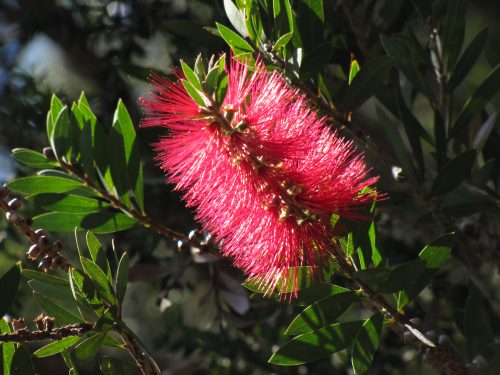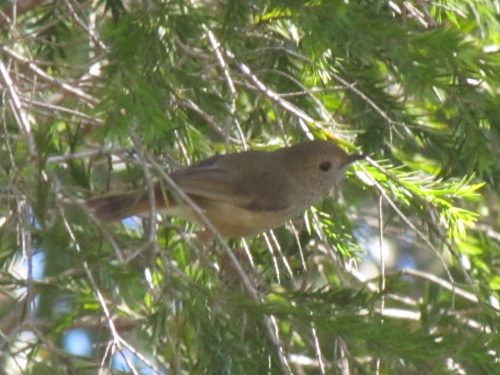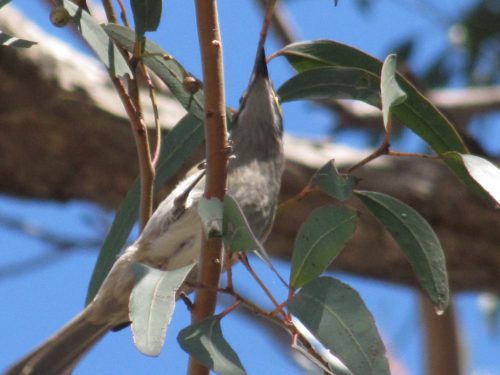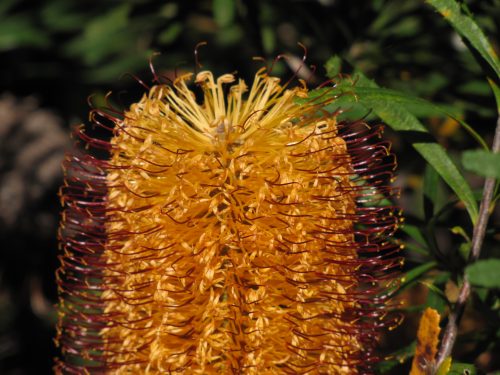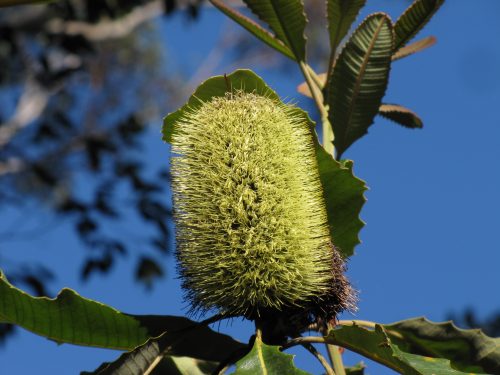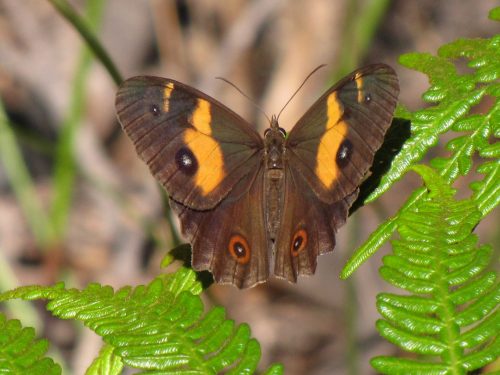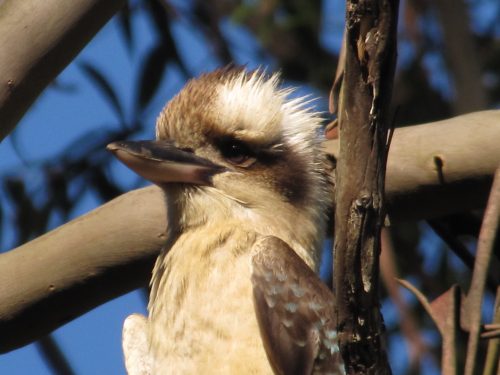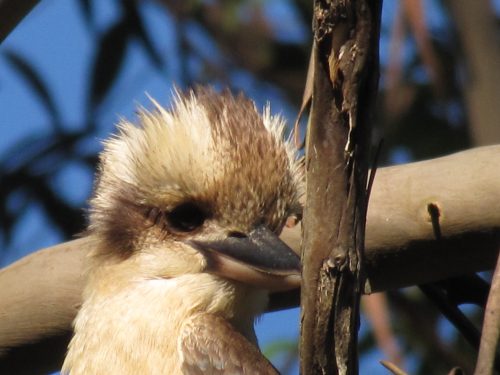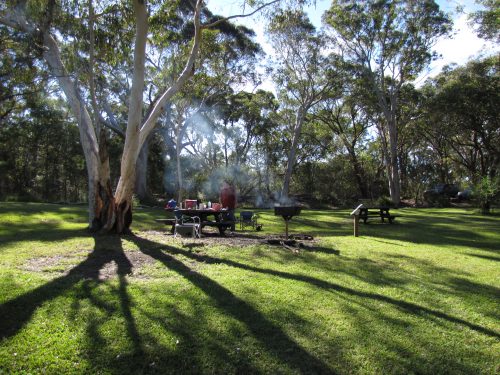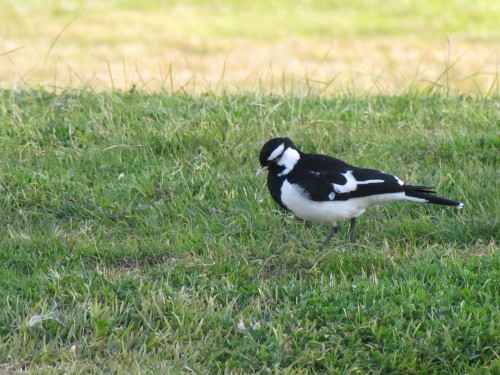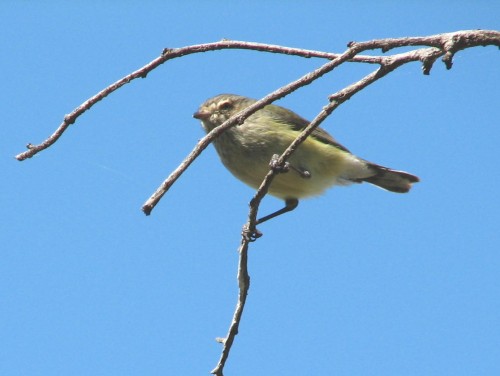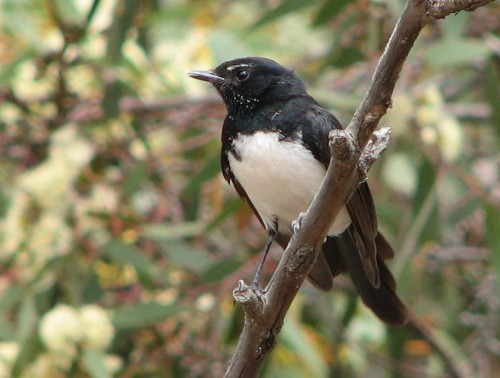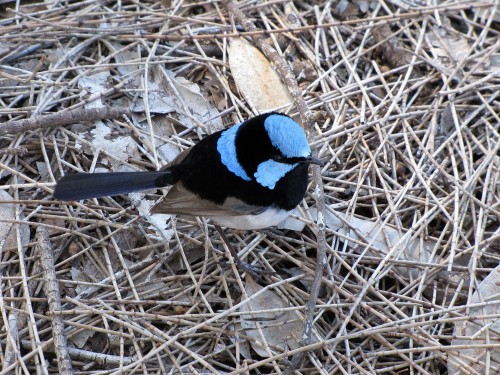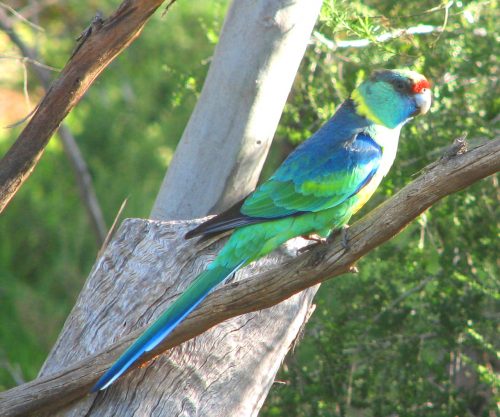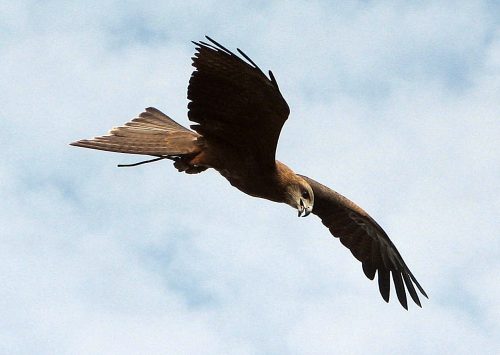Ku Ring Gai Wildflower Gardens
Whenever we visit our son and his family in Sydney, we try to spend at least a few hours in the Ku Ring Gai Wildflower Gardens. These gardens are about a half-hour drive from his home. The gardens feature a section which has been planted with Australian Native Plants, and the remainder of the gardens is natural scrubland.
There is an excellent new Visitor Centre, manned by helpful, friendly staff. Attached to the centre, there is a small nursery with Australian plants for sale. Groups may organise guided tours of the gardens and sections can be hired for functions, such as children’s birthday parties. To hire the facilities, contact the Ku Ring Gai Council. There are also many walking and cycling tracks throughout the gardens, many of them wheelchair friendly.
On our most recent visit, we had morning tea in one of the picnic areas before going on one of the walks. Later we explored another part of the gardens before moving to a third area for lunch. In all of this time, I had my binoculars and camera at the ready. These gardens can be frustrating at times. On occasions, the garden is filled with birdsong and I have found it hard to keep up with making a list of species seen or heard.
This time, however, although I could hear a few birds, many of them remained frustratingly out of view of my binoculars, as well as hard to find with my camera. Small birds, feeding the upper canopy of tall trees and bushes, make it very hard to get any good shots at all. Although I managed a few photos, I am not happy with any of them. I will just have to go back on our next visit to Sydney.
One of the birds I was able to photograph was the one above. It is a very poor shot and I think that it is a Striated Thornbill, a common species in these gardens. I hope that I can get a better shot on my next visit. In order to get one, the birds will have to sit still a lot longer than they do now. Perhaps someone could train a few for me.
Just after taken the photo of the thornbill, I saw what I think is a Yellow-faced Honeyeater feeding in the tree high above me (see photo above). I was looking almost directly straight up, and the bird stayed high in the foliage. I can just make out the yellow patch on the face next to the eyes.
While I had a frustrating time photographing the birds, some of the flowers were far more cooperative. While there was not all that much flowering, I still managed a few good shots (see above and below).
As a bonus, I managed a nice shot of a Varied Sword-grass Brown butterfly.
Go to the bottom of this post to see links to other posts about these gardens.
Further reading:
Lunch snatching Kookaburra
Recently I have written about our trip to Sydney last month. I am a bit behind with sharing my sightings and photos on that trip, so I had better rectify that in the coming days. Actually, it will probably be over the coming weeks because I have so many photos and experiences to share, especially on the trip home.
On the second last day of our visit to stay with our son, we all decided to have a family picnic at the nearby Lane Cove National Park, about a ten-minute drive from my son’s home – depending on the traffic. My wife and I had taken the grandchildren there a few days earlier. They were keen to have barbequed sausages and try their hand at cooking marshmallows on the coals after lunch.
All was going well. We found a lovely spot with no other people around. We were able to easily get a fire going. Soon the sausages were cooked and we enjoyed our lunch.
“Keep an eye on those kookaburras,” warned Nanna.
There were about five or six Laughing Kookaburras perched in the trees nearby. they were all watching our movements keenly. One of the birds was perched right above our picnic table. We were annoyed when one of them decided to “decorate” the table below. Thankfully, his efforts missed our food.
Just as my son was about to take the last sausage off the plate, one of the birds swooped down and deftly snatched the last sausage. It had obviously done this cheeky manoeuvre many times before, never hesitating and expertly snatching the sausage off the very hot plate in its downward swoop. It didn’t stop but continued off into the forest, hotly pursued by the rest of the “gang” of thieves. We didn’t see where they went to devour the food, but we certainly heard plenty of protesting and squabbling as they fought over their ill-gotten gain.
While we were annoyed by their theft, it was wonderful for our grandchildren to be there to witness nature in the raw like that.
Despite our loss, we had all eaten well and enjoyed our picnic on a lovely sunny autumn day.
Good birding,
Trevor
Lunch time birding
Fine weather
It is autumn here in southern Australia and this is the favourite season of ours. We generally have very little wind, a few cloudy days but the majority of days are chilly in the morning with occasional frosts, followed by a sunny day. On lovely days my wife and I love to sit out on our back veranda to eat our lunch. This part of our house is overlooking our garden and the nearby mallee trees. It can be a perfect spot to do some birding without disturbing the birds going about their normal daily activities.
Binoculars
In recent days I have taken to also wearing my binoculars while I eat. I must say that I do more birding than eating in this way. The food eventually gets consumed but the interruptions are frequent. Today was a particularly good day with an interesting range of birds. Possibly the most common species in our garden would have to be the House Sparrows and the Common Starling, two introduced species here in Australia.
We also have many Weebills and Yellow-rumped Thornbills. About a dozen of these beautiful thornbills few past only a few metres from where we sat, calling to each other as they flew. The Weebills are harder to see because they tend to forage in the tree-tops and are sometimes hard to pick up as they move in the foliage. Their call is hard to miss, however. It is a similar situation with both the Striated Pardalotes and the Spotted Pardalotes: hard to see but easy to hear.
Talking about calls, one of the more strident bird calls we experience here is the Australian Magpie-lark, shown in the photos at the top of this post. We had two in the garden today but they hardly made a sound. In fact, the female sat in a nearby tall mallee tree preening itself for most of the time we were sitting there. Not a call to be heard and I nearly missed listing her for my database. Also quite inconspicuous today were the resident Australian White-backed Magpies, heard just over the neighbour’s fence but not actually seen during our lunchtime break.
At one stage I commented to my wife that I hadn’t seen the White-browed Babblers in a while. The local family must have heard my comment because a group of about eight flew past a few minutes later, their mewing calls unmistakeable. In the distance, I could hear several Little Ravens calling, and one of them came quite close, investigating the trunk of a nearby tree and looking under the bark for a few beetles or spiders for lunch.
One of the notable birds missing today was the resident Willie Wagtails. I didn’t see either of them, nor did I hear them. That can happen sometimes and I guess that they were feeding some distance away from the house – perhaps on the other side of the building. Or they might have been out in the paddock because we live on a five-acre block. I was also surprised by the lack of honeyeaters. I saw several White-plumed Honeyeaters and a few Red Wattlebirds, but the usually noisy and bossy New Holland Honeyeaters were nowhere to be seen – or heard. Strange.
Over the last five years, we have been delighted to have a family of Superb Fairy-wrens resident in our garden (photo above). We take great delight in seeing them hopping around, flitting from bush to bush or feeding out in the open. Today the family of five – there may be more – were investigating the puddles of rainwater on the swimming pool cover. Several of them even tried it out by having a quick bath. Who needs to supply bird baths?
Every day we have plenty of parrots in our garden – either landing in the trees or flying overhead. We have a noisy group of Mallee Ringneck parrots (photo above) which we see and hear every day so I class them as a resident species. Today we also had several small groups of Rainbow Lorikeets fly overhead. In recent weeks they have been feeding on the flowering mallee trees, but today they just flew over screeching as they went. The local Galah population often lands in some of our trees but today they just flew over in loose flocks numbering from about six to forty.
At one point I actually put down my food and walked quickly out from the veranda to get a better view of two birds gliding high overhead. At first, I thought they were Wedge-tailed Eagles, mainly because they were so high. On closer inspection using my binoculars, I could see that they were Black Kites (see photo above), common in this area but one species I hadn’t seen near our home for quite some time.
In all, I saw or heard 22 species during the half hour lunch break. This is not a huge number, but it was a satisfying break despite that.
I would love to hear about the birds in your garden – use the comments section.
Good birding,
Trevor
